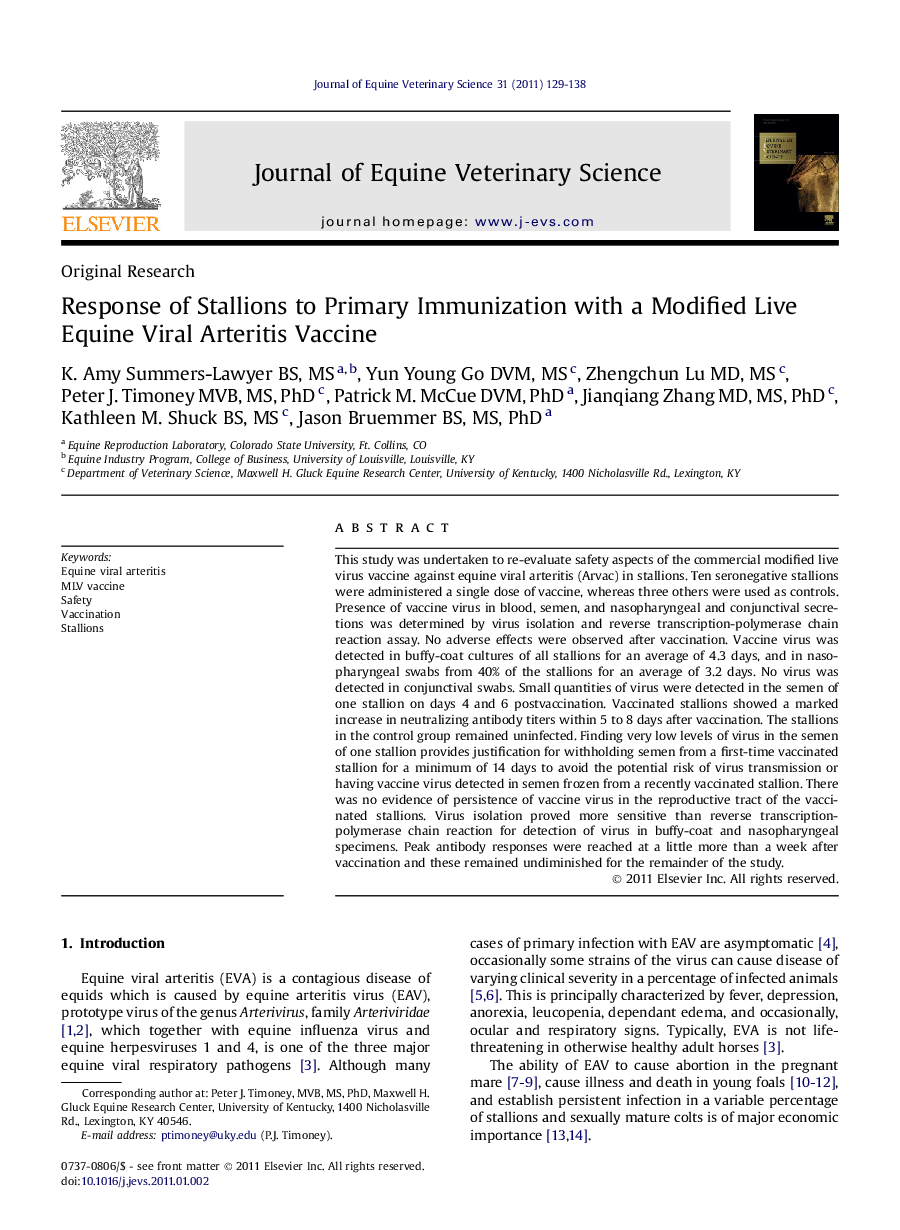| Article ID | Journal | Published Year | Pages | File Type |
|---|---|---|---|---|
| 2395786 | Journal of Equine Veterinary Science | 2011 | 10 Pages |
This study was undertaken to re-evaluate safety aspects of the commercial modified live virus vaccine against equine viral arteritis (Arvac) in stallions. Ten seronegative stallions were administered a single dose of vaccine, whereas three others were used as controls. Presence of vaccine virus in blood, semen, and nasopharyngeal and conjunctival secretions was determined by virus isolation and reverse transcription-polymerase chain reaction assay. No adverse effects were observed after vaccination. Vaccine virus was detected in buffy-coat cultures of all stallions for an average of 4.3 days, and in nasopharyngeal swabs from 40% of the stallions for an average of 3.2 days. No virus was detected in conjunctival swabs. Small quantities of virus were detected in the semen of one stallion on days 4 and 6 postvaccination. Vaccinated stallions showed a marked increase in neutralizing antibody titers within 5 to 8 days after vaccination. The stallions in the control group remained uninfected. Finding very low levels of virus in the semen of one stallion provides justification for withholding semen from a first-time vaccinated stallion for a minimum of 14 days to avoid the potential risk of virus transmission or having vaccine virus detected in semen frozen from a recently vaccinated stallion. There was no evidence of persistence of vaccine virus in the reproductive tract of the vaccinated stallions. Virus isolation proved more sensitive than reverse transcription-polymerase chain reaction for detection of virus in buffy-coat and nasopharyngeal specimens. Peak antibody responses were reached at a little more than a week after vaccination and these remained undiminished for the remainder of the study.
